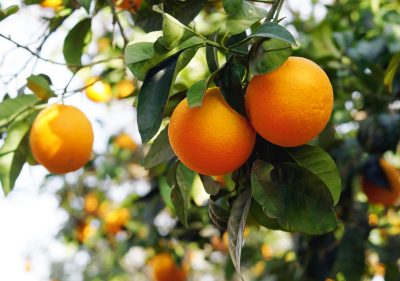News release from the Citrus Pest and Disease Prevention Program
As COVID-19 restrictions ease, summer travel is expected to increase, and California agricultural officials are cautioning Californians on what not to pack for their trips – homegrown citrus fruit and plant material.
Traveling with citrus fruit or plant material can unknowingly spread a dangerous pest – the Asian citrus psyllid (ACP) – and a deadly plant disease it can carry – Huanglongbing (HLB).
According to AAA Travel, more than 37 million Americans will begin their summer travels on Memorial Day weekend this year – a 60% increase from 2020. While most travelers are mindful to take extra care of their personal health while traveling during the pandemic, officials are urging Californians to also be mindful of the health of California’s citrus trees by obeying plant quarantine restrictions and taking extra precaution when gifting citrus fruit from backyard trees.
The ACP, a pest that feeds on citrus leaves, can spread HLB, the fatal and incurable citrus disease also known as citrus greening disease. While not harmful to humans or animals, there is no cure for HLB, and infected trees will die. Both the pest and disease have been found in the state of California and citrus tree owners should be on high alert.
Transporting citrus fruit with leaves still attached can inadvertently spread the pest to new areas of the state. Quarantines are in place throughout California that limit the transport of citrus plant material across state and international lines, and between areas where the psyllid and disease have been found. Portions of Southern California are currently under an HLB quarantine in numerous communities of Los Angeles, Orange, San Bernardino and Riverside counties.
“The best way to stop the spread of the disease is to stop the spread of the pest, which is why we urge residents not to transport their backyard citrus into and out of quarantine zones, bordering counties, state lines or international borders,” said Victoria Hornbaker, director of the Citrus Pest and Disease Prevention Division at the California Department of Food and Agriculture. “Community support is critical to saving California citrus and residents must work together to ensure our iconic citrus crop can continue to bring joy to people across the state.”
Tree owners may choose to share fruit with friends and family within their quarantine area. State agricultural officials recommend all leaves and stems to be removed and fruit washed thoroughly before moving it from the property. This prevents psyllids or leaves infected with HLB from being transported to new areas.
All California residents are encouraged to inspect their trees for psyllids and HLB whenever watering, spraying, pruning or tending to them. The pest is one-eighth of an inch long and feeds at a 45-degree angle, making the insect appear thorn-like on leaves and stems. Symptoms of HLB include blotchy, yellow leaves; deformed fruit that doesn’t ripen; and excessive fruit drop. Residents should report pest or disease symptoms to the free California Department of Food and Agriculture Pest Hotline by calling 1-800-491-1899.
Commercially grown California citrus is a $3.4 billion industry, which could be lost if HLB is not stopped. Pest and disease management is crucial to protecting not only your own trees, but also your neighbors’ trees and the state’s citrus production. By working together to identify and act against the devastating disease, we can protect California’s citrus.
For more information on ACP and HLB prevention, visit CaliforniaCitrusThreat.org.
About the Citrus Pest & Disease Prevention Program
The Citrus Pest & Disease Prevention Program was established in 2009 to advise the Secretary of the California Department of Food and Agriculture and agricultural industry about efforts to combat serious citrus pests and diseases – like the Asian citrus psyllid and Huanglongbing – that threaten California’s citrus trees. To learn more, visit CaliforniaCitrusThreat.org.



